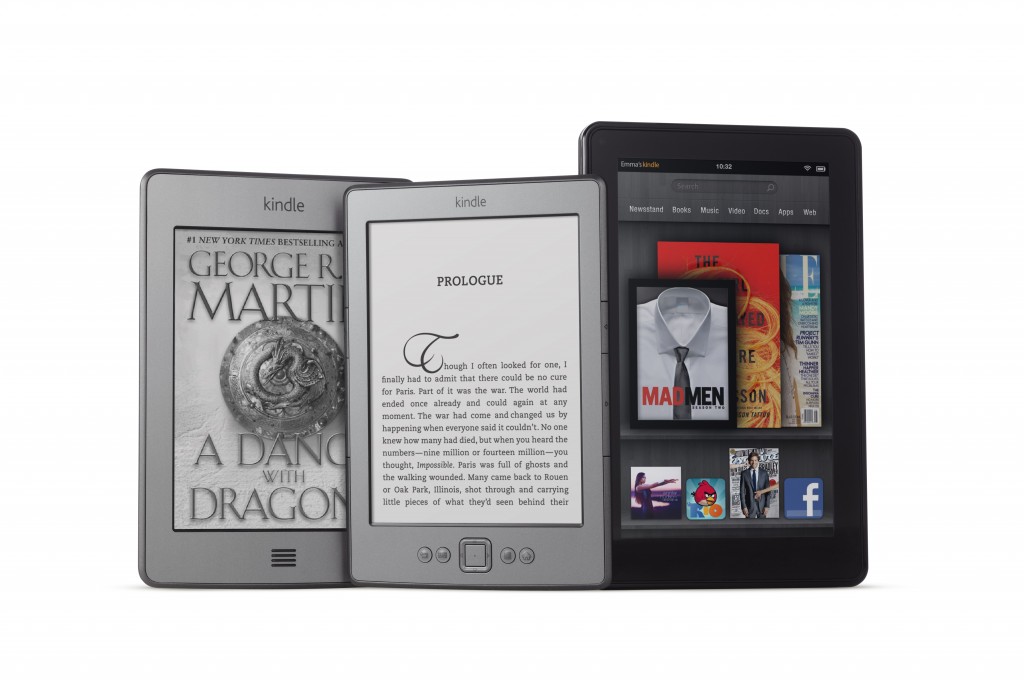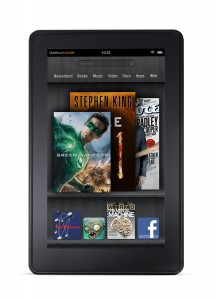The day has finally come; the tablet market has been upended. As I argued back in early August, the tablet PC market was due for a shake-up; other manufacturers simply couldn’t hope to move significant quantities of iPad-like tablets at Apple’s price points, and, as I suggested in late July, Amazon was the one company with the resources and will to bring an iPad-killer to market. Amazon CEO Jeff Bezos vindicated my soothsaying at a highly publicized press conference, where he introduced his company’s hotly anticipated Kindle Fire Android-based tablet, which will retail for a door-busting price of just $199. In addition to the Fire, Bezos also unveiled a new base-model Kindle, which will sell for $79, as well as the touchscreen-enabled e-ink Kindle Touch, which will come in at two price points; $99 for the ad-sponsored model, and $149 for the ad-free, 3G enabled Touch model.
While the $79 Kindle and Kindle Touch models are certainly newsworthy products, the real story here is the Kindle Fire, which eschews 3G data service, onboard cameras and microphones, and copious storage space (the onboard memory is only 8GB) to bring a bare-bones, high-performance tablet within reach of nearly every gainfully employed American consumer. Technically, the Kindle Fire is powered by Android, but you wouldn’t know it from using the device, as Amazon clearly spent some time and money customizing the UI, and the snappy, sleek interface bears almost no resemblance to its Honeycomb tablet brethren. As one would expect, the UI foregrounds Amazon’s various digital offerings—e-books, digital music, and streaming film/video—but what’s unexpected is that the Fire will also come pre-loaded with Amazon’s just-announced, bespoke “Silk” web browser, which utilizes Amazon’s extensive “Elastic Compute Cloud” infrastructure to intelligently pre-load browser content to a user’s device, a strategy that should make for some lightning-fast web browsing.
Don’t be surprised if you find the Kindle Fire’s form factor to be more than a little familiar; Amazon sourced the Kindle Fire’s hardware through Quanta, who also manufactures the Blackberry Playbook (see SBGM editor Shy Mukerjee’s review), and the two products’ family resemblance is unmistakable. From the information available thus far, it seems as though the Kindle Fire and Playbook share the same processor and chassis, and likely the same display panel; the main differences seem to be the Fire’s aforementioned lack of frills such as front or rear-facing cameras, or 3G connectivity. While it may seem strange for Amazon to base such a high-profile product on another company’s existing design, two factors likely led to this decision; cost savings (OEM manufacturers were already set up to produce the Playbook, which allows Amazon to sell their Fire for the category-busting—and likely money-losing—price of $199) and time concerns, as Amazon wanted to get this device out before the holiday season, and Barnes & Noble’s release of the Nook Color 2. Amazon wanted to get its foot in the tablet door, and utilizing the Playbook’s well-received hardware (the Playbook’s software, on the other hand, is a matter for debate) allows them to get the product out while the non-iPad tablet market remains up for grabs.
Indeed, despite its dual-core processor and snappy interface, Amazon doesn’t seem to think that the Kindle Fire is a direct iPad competitor; there’s a big difference in the form factor between the two devices, and the iPad’s full arsenal of cameras, microphones, and 3G connectivity make it viable as both a communications and entertainment device, whereas the Kindle Fire is really suitable only for its entertainment offerings. The iPad remains safe for now, but with Amazon essentially admitting that they plan to offer a 10″ tablet in early 2012, Apple could suddenly find itself in a very tight position. Assuming that the 10″ Fire uses the same processing internals as its smaller sibling—and there’s no reason why it shouldn’t—Amazon could bring the larger-form tablet to market for less than $300 (this depends, of course, on whether they opt to include cameras/microphones/3G in the larger model, and how much they’re willing to subsidize its cost).

Given that Apple currently enjoys an estimated 25%-30% profit margin on its iPad 2s, it seems unlikely that they’ll be willing to engage in a price war with Amazon, though they’re also the only other tablet manufacturer with a well-established, money-making content delivery system.. If Amazon will, indeed, be losing $50 on every Kindle Fire, it’s obvious that they expect to significantly recoup those costs through subsequent sales of digital content, essentially bringing the economic logic of video game manufacturers (the Playstation 3’s original $499 retail price, for instance, was estimated to be over $300 less than its actual manufacturing costs) to the tablet market. If Amazon finds that this loss-leading pricing structure to be successful, and extends it to its upcoming 10″ tablet, the potential is there for them to completely take over the tablet market. Companies such as Acer, Asus, and Samsung simply won’t be able to manufacture profitable offerings anywhere near Amazon’s price points: And, as we’ve learned from the recent HP Touchpad firesale, most consumers believe that tablets are luxury/secondary devices, with price being the single greatest determining factor in catalyzing sales. I honestly hope that the tablet market doesn’t become a duopoly split between Apple and Amazon (but from our current moment, I don’t see how things could go otherwise) though other tablet makers are going to have to get seriously creative—either through new pricing structures, feature sets, or radically different form factors/product designs—to gain a significant presence in this product category. Let’s hope that some of them rise to the challenge, and provide the competitive pressure needed for Amazon and Apple to continue their breathless pace of innovation.
If you’re as excited as we are, and there’s no reason not to be—at $200, this tablet should prove to be a steal—you can preorder the Kindle Fire today.
